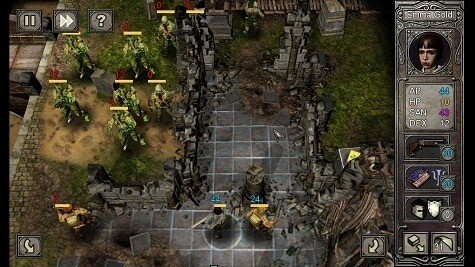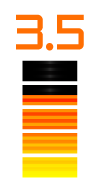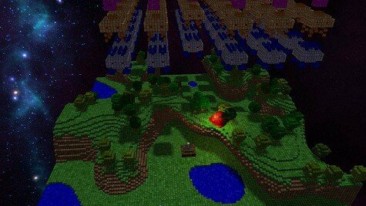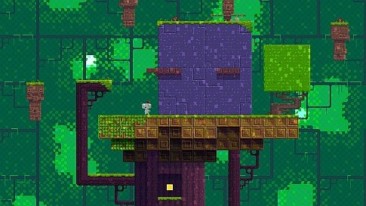Developer Summary
In ‘The Wasted Land’ the player uses their team of investigators to uncover a deadly conspiracy underlying the Great War. Barbed wire, mustard gas and machines guns will prove to be the least deadly encounter that the investigators will meet as they venture out onto the battlefield to try and solve the mystery of the Wasted Land. As the game progresses, the player can build up the skills, weapons and equipment of their team. Key to the game is Sanity; the investigators must guard their minds against the myriad horrors that threaten to send them into the mouth of madness.
Developed in co-operation with Chaosium, the publishers of much loved paper role-playing game, Call of Cthulhu.
What We Think
CoC: The Wasted Land is a dark and intense romp through H.P. Lovercraft’s dismal realm. Unfortunately, at times the interface can be more than a bit rickety.

Background Noise
In 1981, Chaosium released the Call of Cthulhu table-top RPG. It surrounded the world of H.P. Lovecraft’s Cthulhu mythos, and players would take on the role of various professionals as they unraveled the mania that lay beneath the surface of the real world. Last year, Red Wasp Design, in conjunction with Chaosium, began the creation of The Wasted Land as a digital chapter in the Call of Cthulhu realm.
Reanimation Domination
The action surrounds a special British commando unit deployed to investigate and disrupt the Third Reich’s suspected research into the occult. They soon discover that the grand Nazi scheme is to breathe life back into the corpses of all the fallen soldiers on both sides, and control them as an unstoppable army. Considering the constantly increasing body count in the trenches, it’s all too clear that this plan must never come to fruition.
Red Wasp instantly creates an exquisitely dark atmosphere. The opening music – suitably creepy in its own right- becomes even more spine tingling once “Long Way to Tipperary” can be heard underneath the warbling distortion. In lieu of a music track, the action is accompanied by a loop of the sorts of sounds one might picture emanating from a glowing, smoking hole in the earth. The dialogue for each of the main characters is well-written, and helps to effectively outline a level’s objectives, without becoming verbose.

The action plays out in a turn-based RPG format. The player has an opportunity to move characters around the battlefield and attack enemy units. Once the player has depleted all action points and called an end to his turn, the enemy units have an opportunity to do the same.
The beginning of a round refreshes the action points of all units to full. Moving and attacking will diminish these points, depending on the action. Rifle weapons, for example, generally require more action points to employ, but do more damage than small arms. There is also the option to spend more action points on an attack, thereby raising the chances of a successful hit. Crossing certain types of terrain will deplete more action points than others. Once a character no longer has enough points to perform an additional action, the player must wait until the next turn to move that character again.
The early stages initially ease the player in the the combat mechanics, deploying a few basic Nazi units that are fairly easy to dispatch. Before the end of the first stage, more advanced units are deployed. A few stages in, enemy stages become a full-on barrage of deadly soldier and undead units. A few lucky hits from a team of creatures can flatten out an ally, instantly altering the flow of the skirmish. When hordes of foes are flocking in from all sides, The Wasted Land becomes a strikingly intense experience.
Jung Guns
Staying true to Call of Cthulhu’s pencil and paper roots, each character has a SAN score. Sanity is depleted as the characters try (and eventually fail) to grasp that they are actually grappling with mystical forces, and when casting magical spells. Once a character succumbs to insanity, he either suffers from paralysis, or gains a round of increased strength and ability points.
While this second outcome may sound ideal, it comes at a cost. After a couple of rounds, the character with pass out from exhaustion, and must be revived by a med kit. Should a character outfitted with a psychoanalysis tome reach an insane character before death, the madness can be undone. In later stages, when almost all creatures are of a mythical origin, sanity can deplete in a few short rounds.

It Builds Character
Between levels, experience points gained in battle can be spent to upgrade character attributes, and earned money can be spent purchasing weapons, spells and health (both physical and mental items. It’s important to strike a balance between restorative and attack type items, as the player only has three rounds to revive a vital character before the game ends. A shortage of med-kits will likely mean having to restart an objective.
Unintentional Madness
The controls make up the most frustrating aspect of the issues one is likely to encounter when playing the game. Moving the screen around requires a click-and-drag mechanic which will often result in a click-and-toss-the-reticule-to-the-other-side-of-the-battlefield instead. Having to jump back and forth across the screen and beyond takes away from the otherwise intense action.
On the PC version (I can’t speak for the iPad version), the mouse must be kept entirely still to register a click; even with the pointer fully within a button, just the slightest shift of the mouse while clicking will render the click moot. A little forgiveness in mouse-handling would ease the grief greatly.
The click-and-hold mechanic used for determining character activities is also finicky at best. Clicking once on a character will surround him with an active character ring. Unfortunately, the sensitivity of the interface makes it too simple to lose this active ring. This is further complicated when a character is attempting to select a target off-screen; the lack of click and drag finesse can result in an overshoot, for example, and once the correct target is on screen, the player may have inadvertently dropped the active ring, making it necessary to start the entire process from scratch. Considering how much of the game depends upon this interface, this is far more than a minor flaw.
The lack of multiple save files poses an additional risk, as a glitch I encountered between levels resulted in having to restart a stage. I had completed the previous stage, but was not through the narrative of the new stage before quitting the game. When I returned to my game, my characters appeared on the previous stage, but the objective squares had been cleared. There was effectively no way to complete the stage, save to start it from the beginning. The stages can take in excess of a half hour to complete, so restarting (after having barely survived the last attempt) was less than desirable.

Waste? Make Haste!
For all its flaws, The Wasted Lands is still one of the more engaging strategy games I’ve played in a while. The near-constant deluge of enemies kept me looking at all sides of the battlefield, and the frustration of being overrun near the end of an objective only made my eventual victory all the sweeter.
There is an excellent balance at play in terms of the number of enemies that will sometimes seem to erupt from the woodwork. I would clear most stages with my team of investigators barely intact. The level of intensity that accompanies the gameplay handily outweighs any technical snafus. Call of Cthulhu: The Wasted Lands will be a welcome experience for fans of fast paced turn-based strategy, and for those who just can’t get enough of the Cthulhu mythos.
Get Call of Cthulhu: The Wasted Land from the official site for Red Wasp Designs
[xrr rating=”3.5/5″]






Thanks for the review. Some good points made. We’re about to update the PC app to improve the controls.
Thanks
That’s great news! I’ll be watching for those, and applying them. I really enjoyed the story and intense pacing of this game.
I hate to be picky… but this game takes place during The Great War (aka World War 1). The Third Reich/Nazis did not exist for another 18 years or so (the build up to WW2), when Hitler came to power. Haven’t played the game, so I’m not sure if this mistake is down to the reviewer or the actual plot of the game.